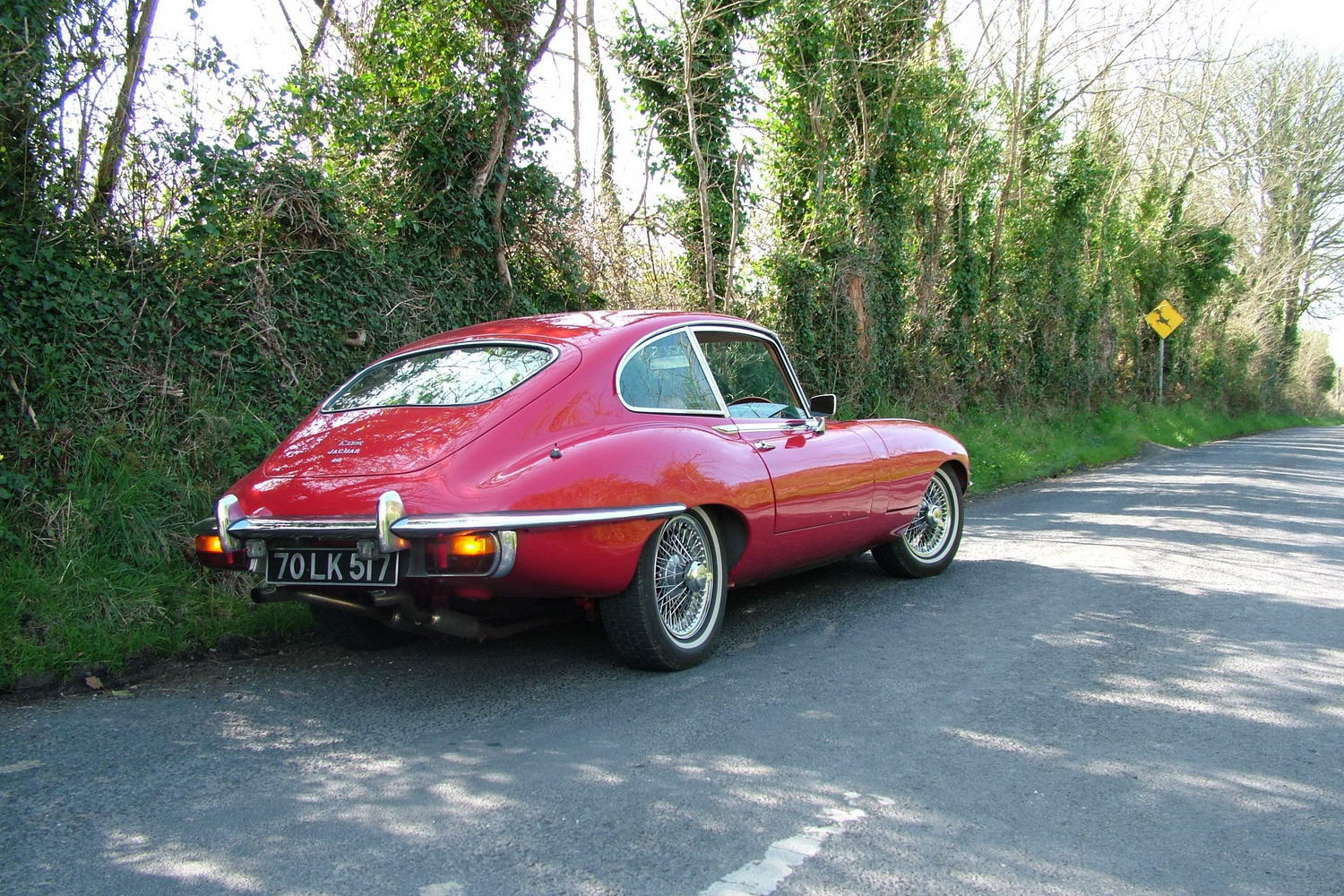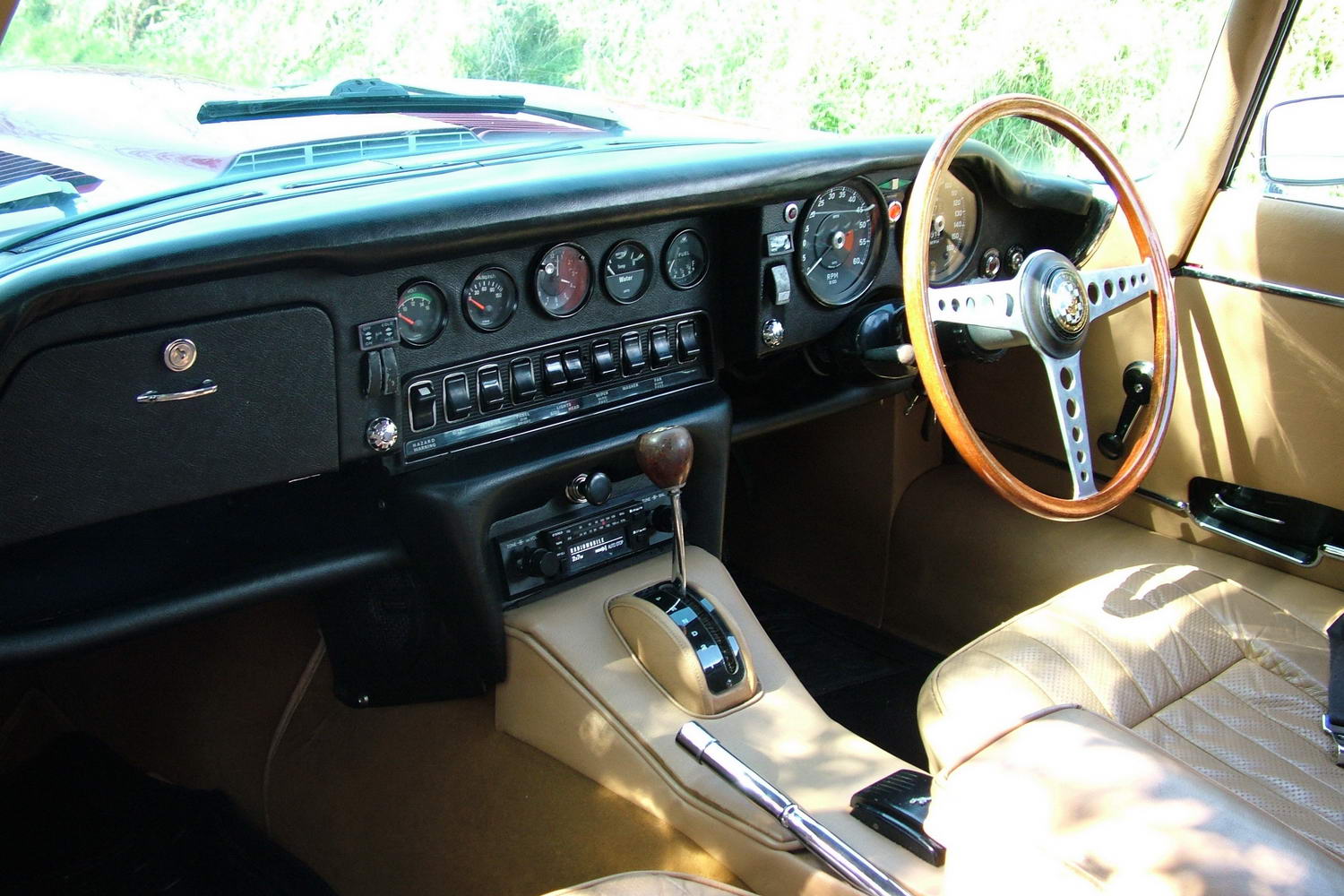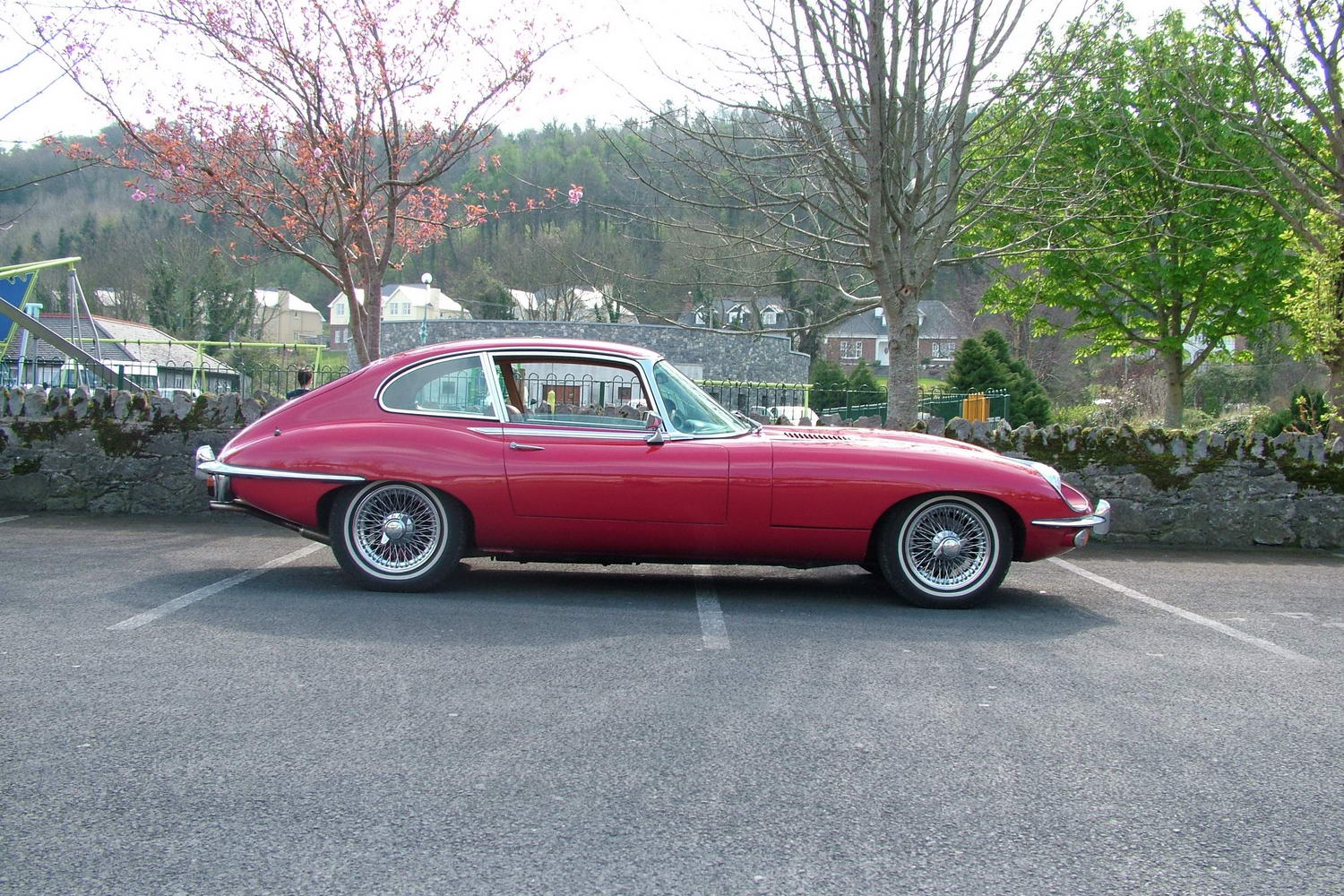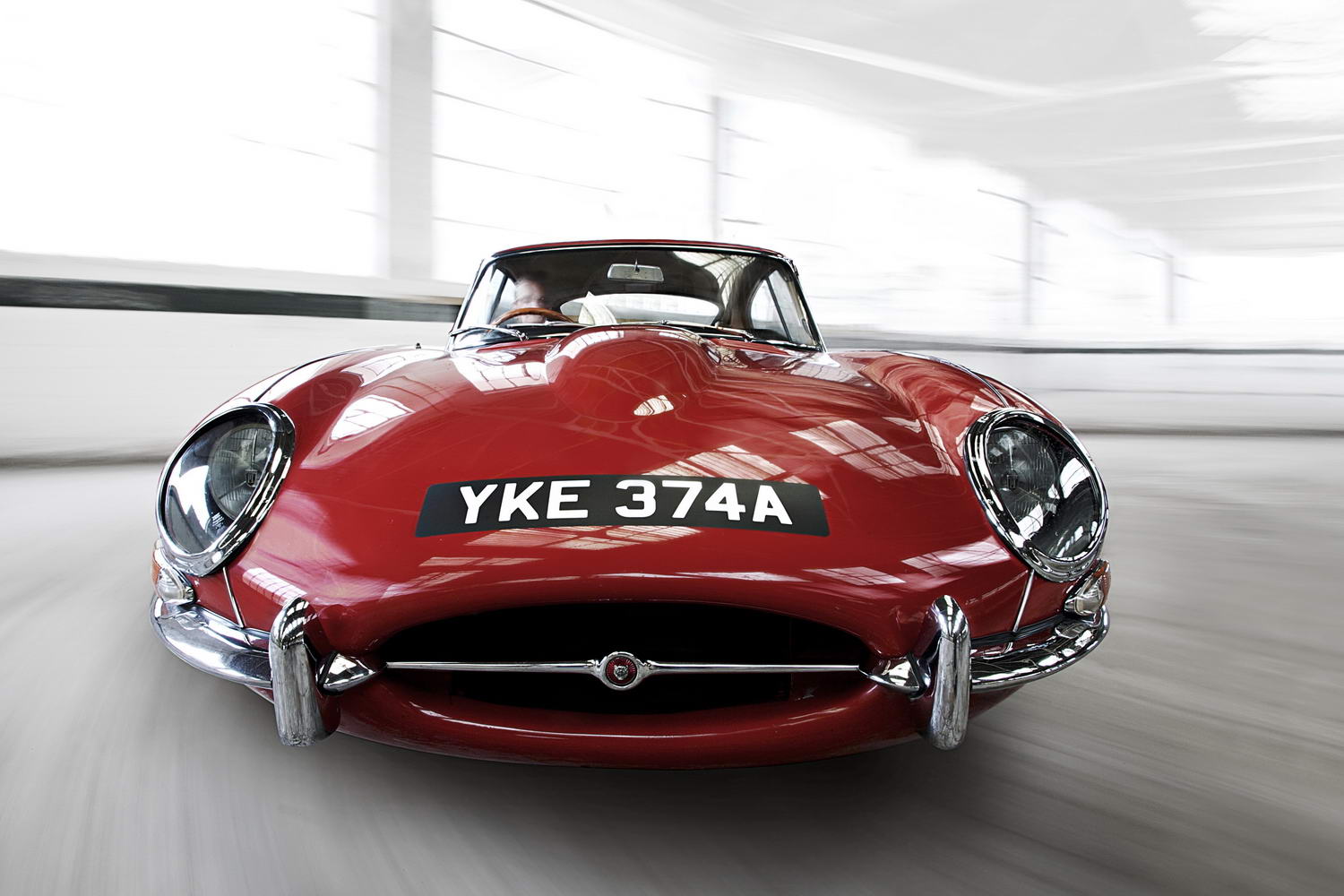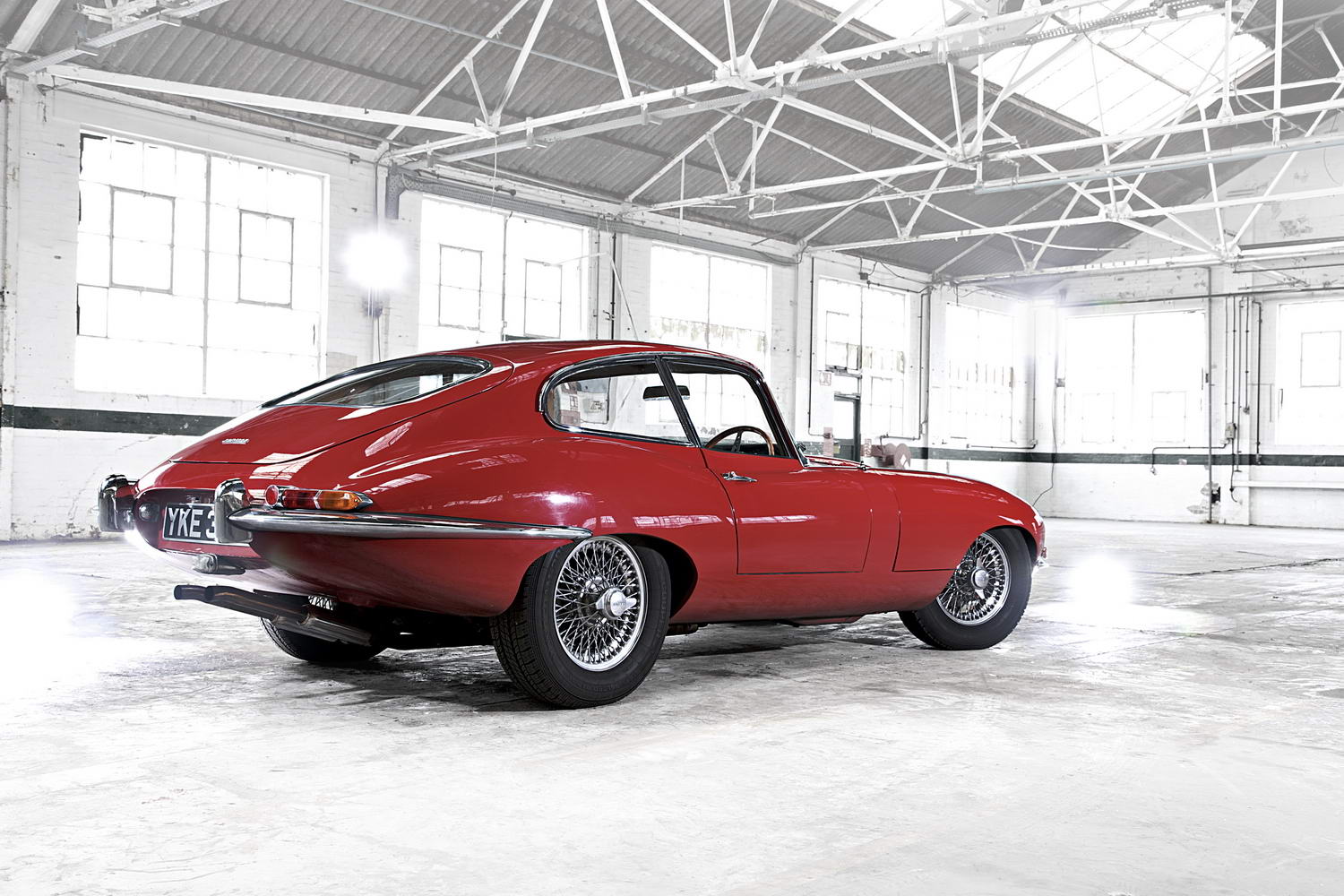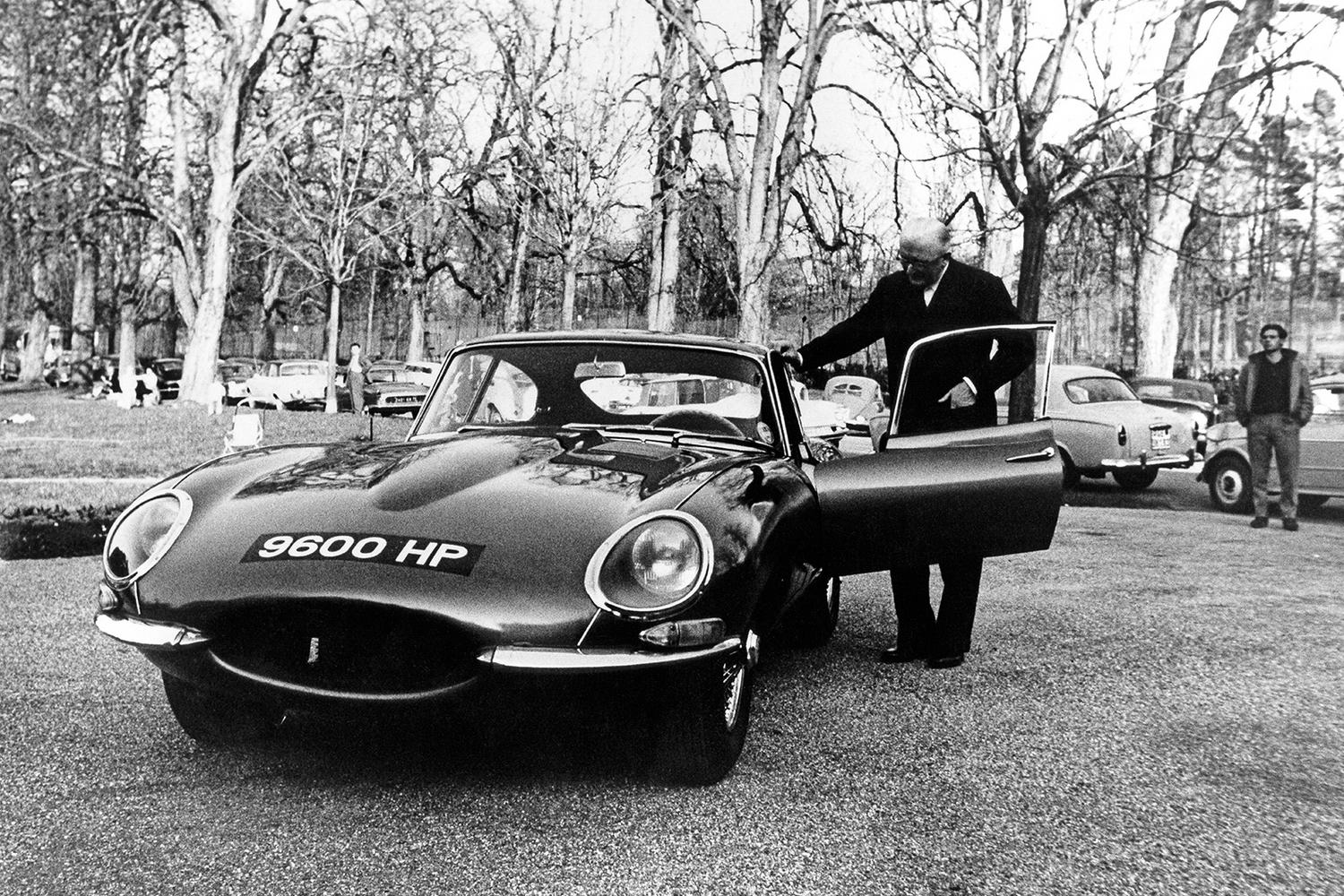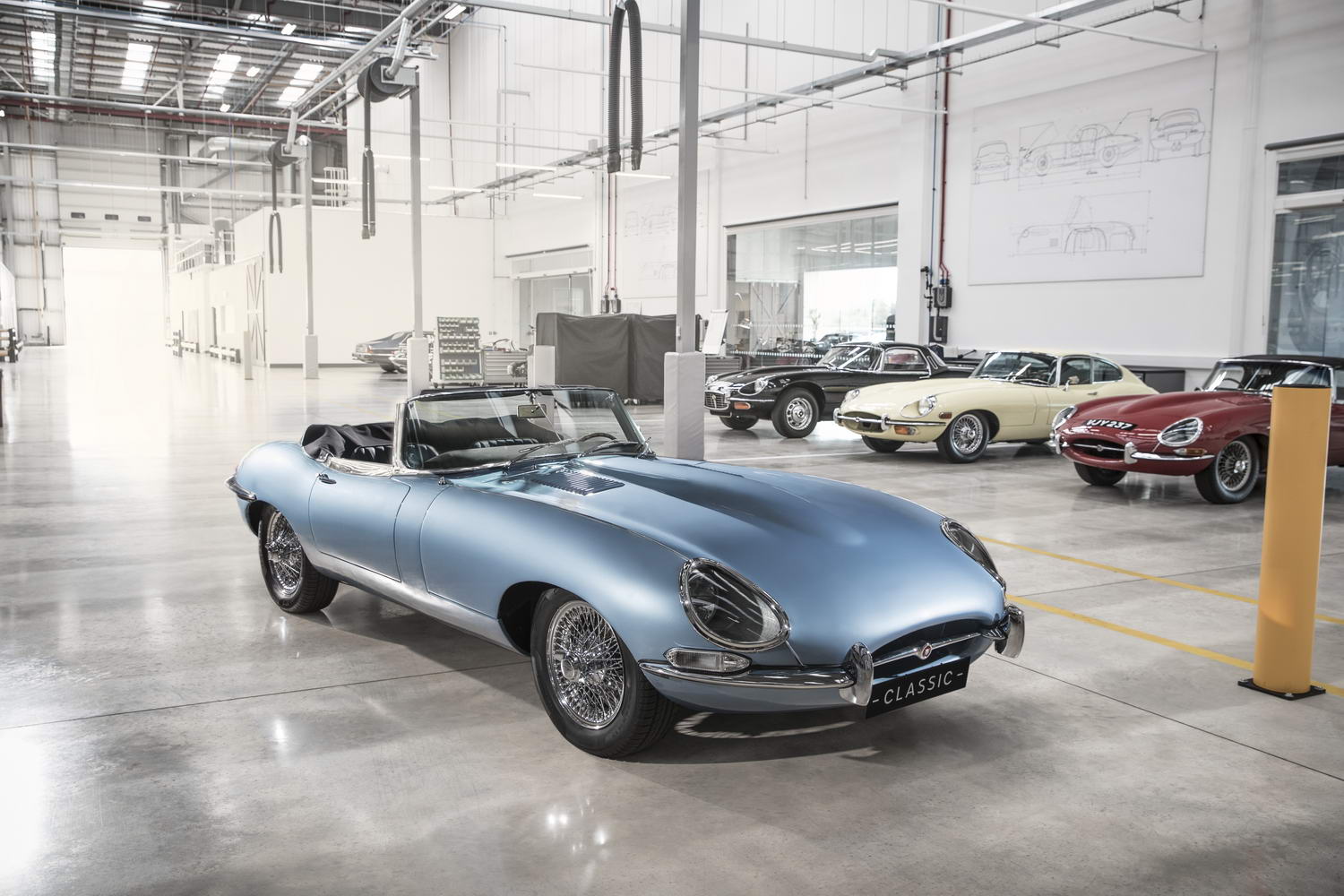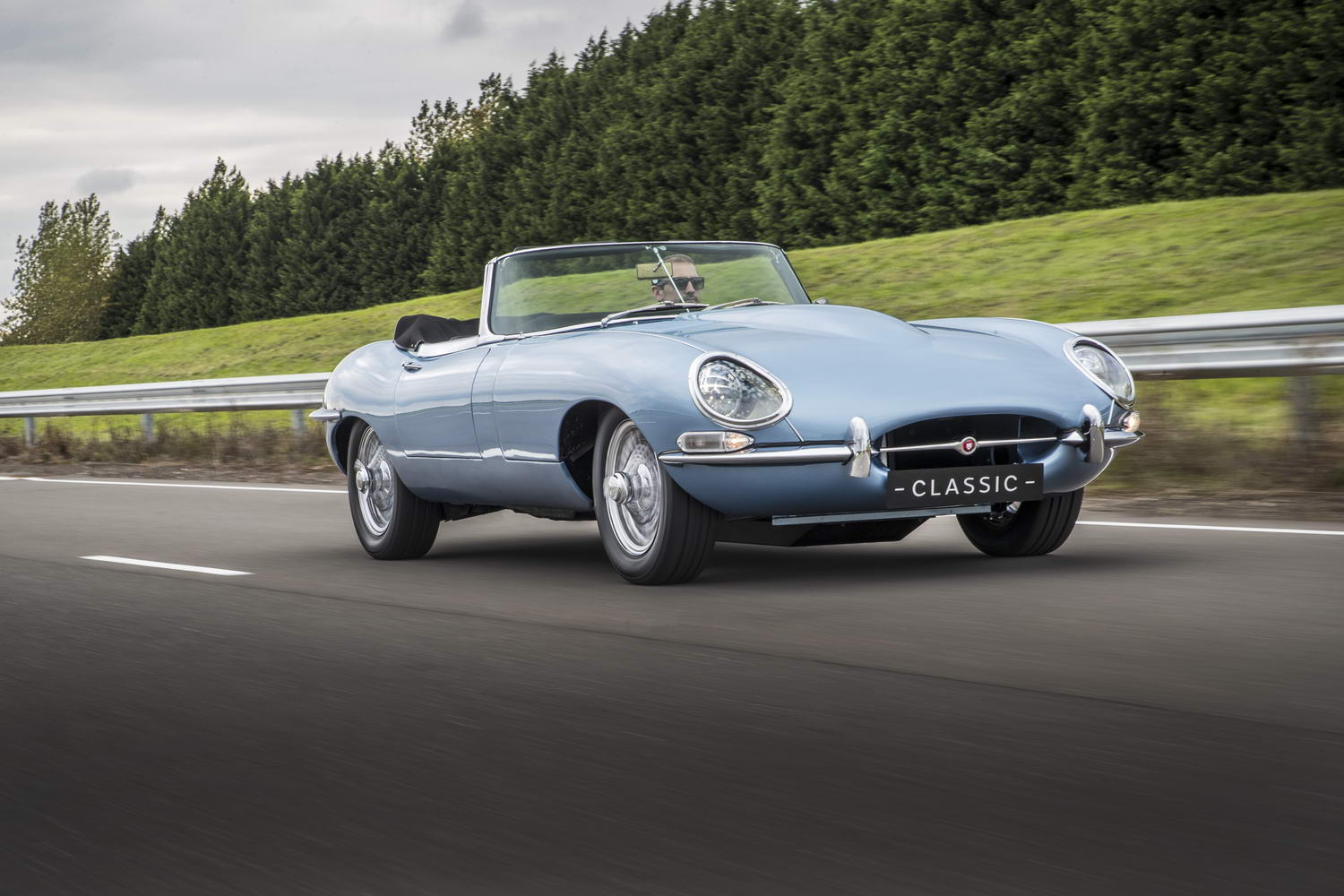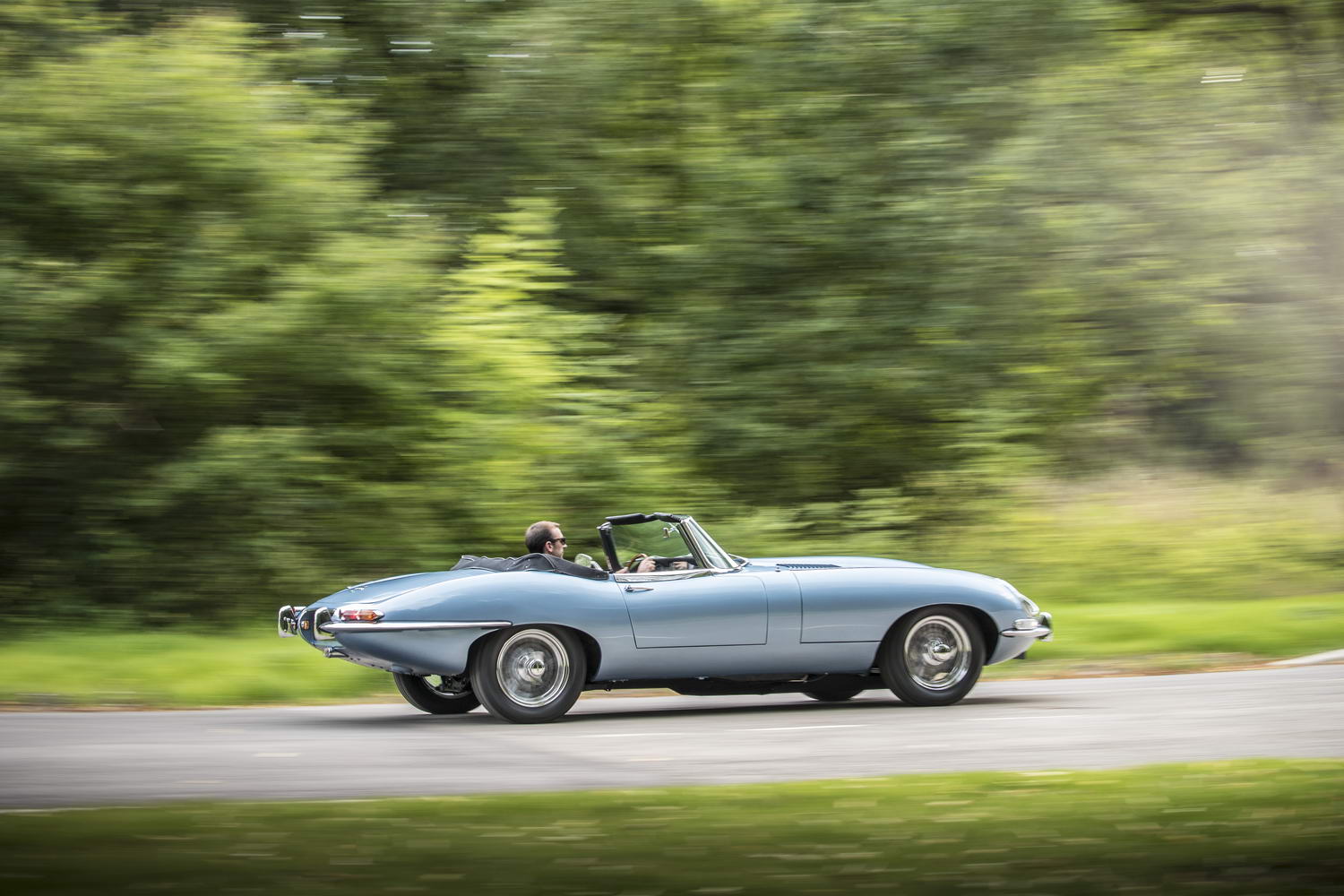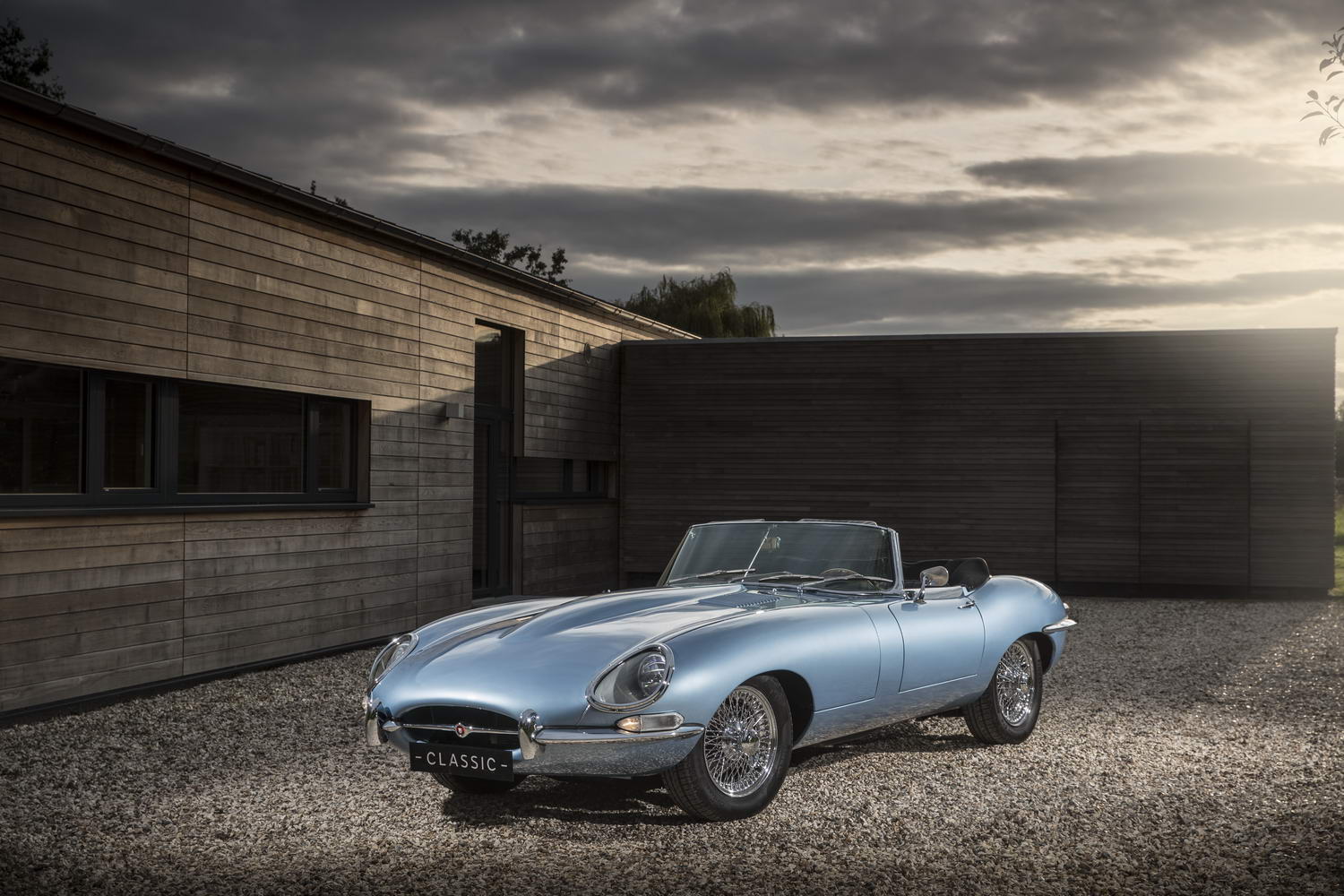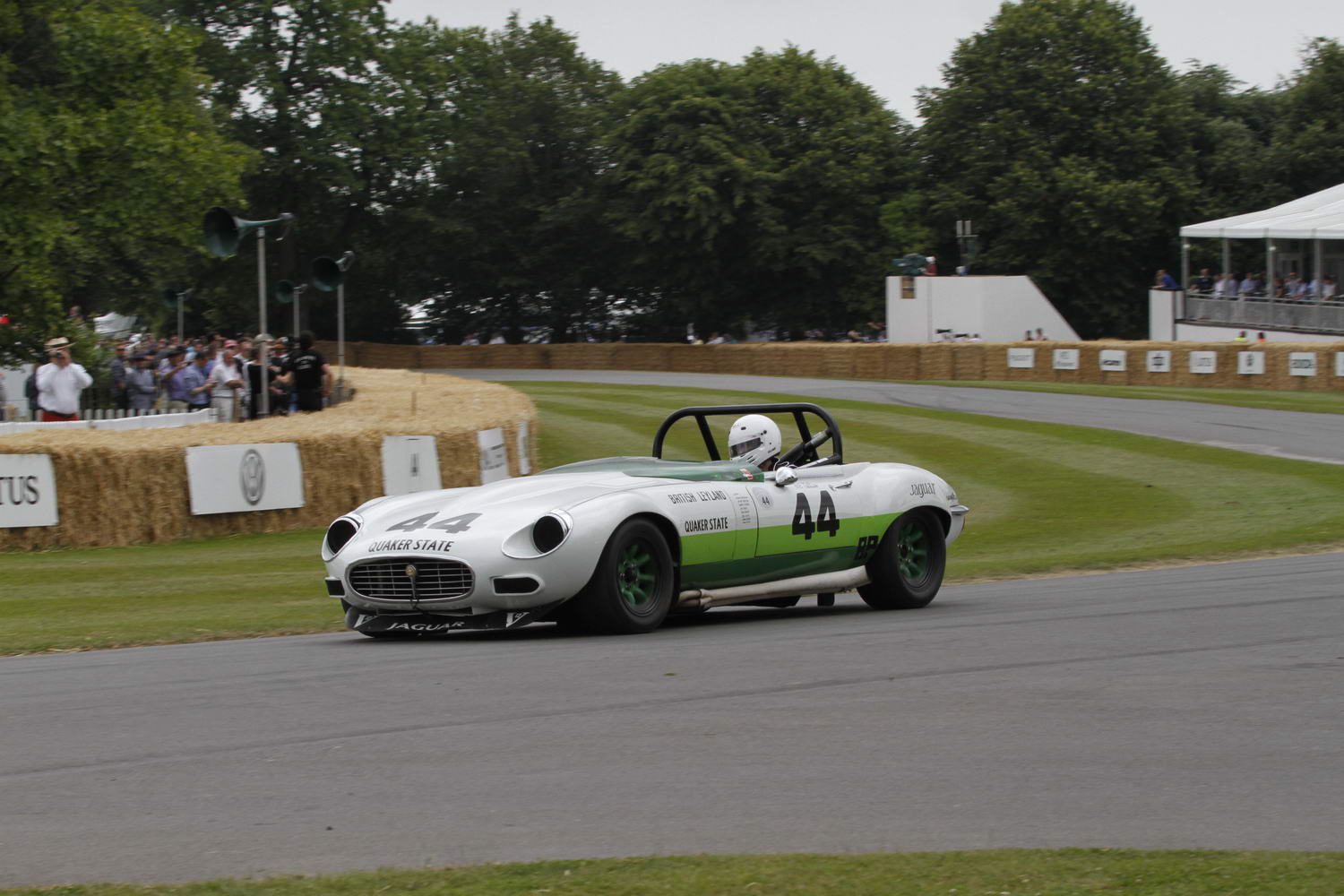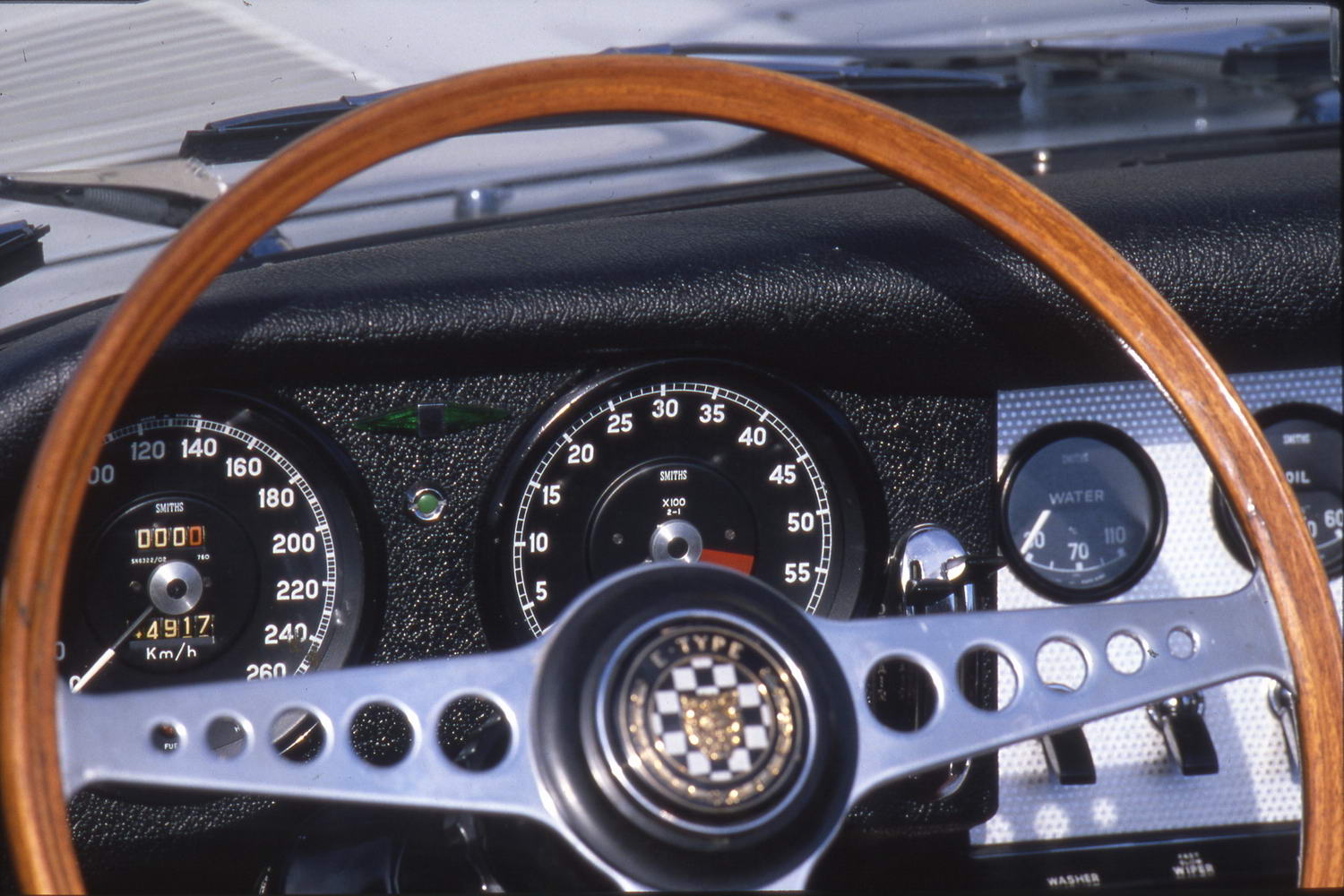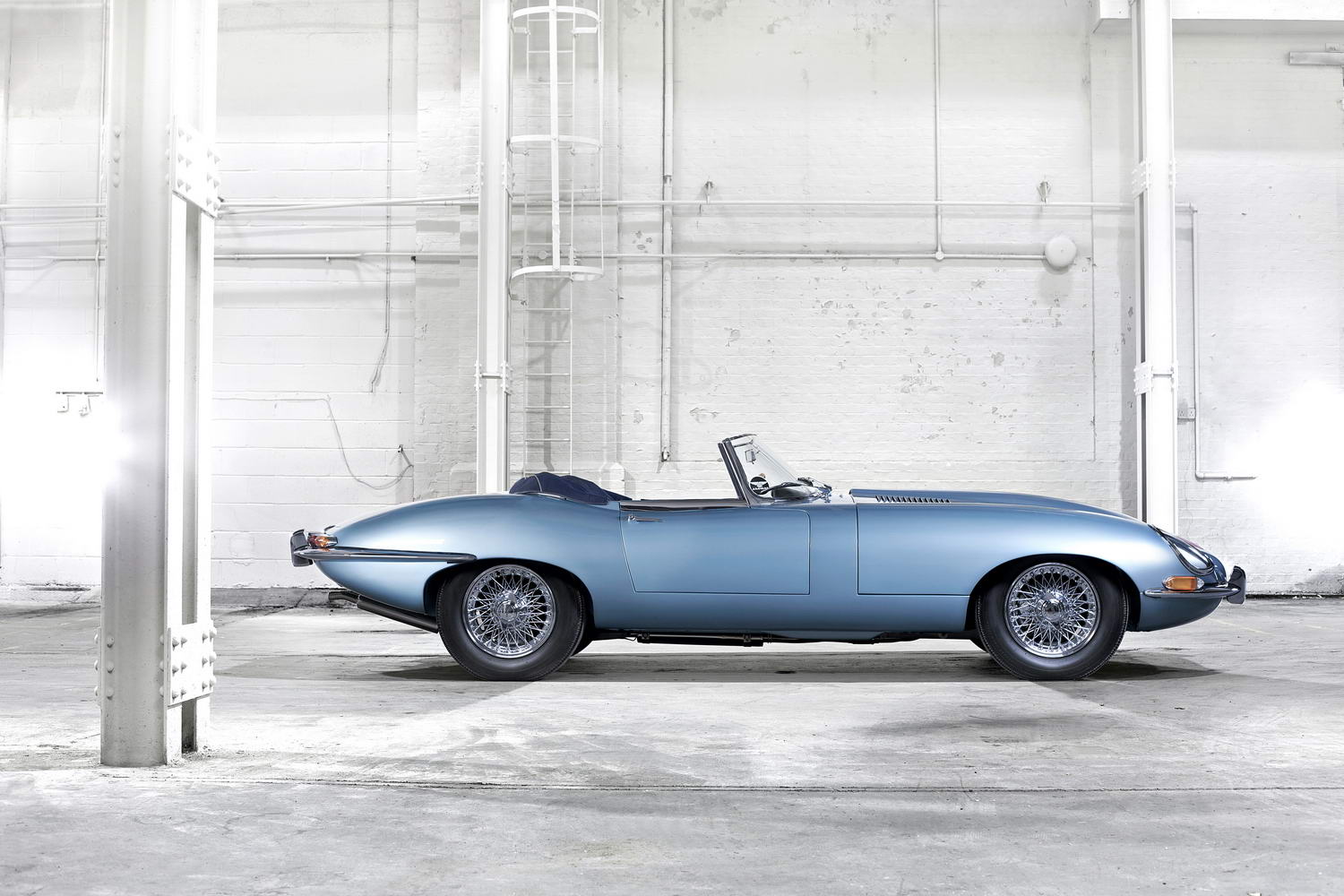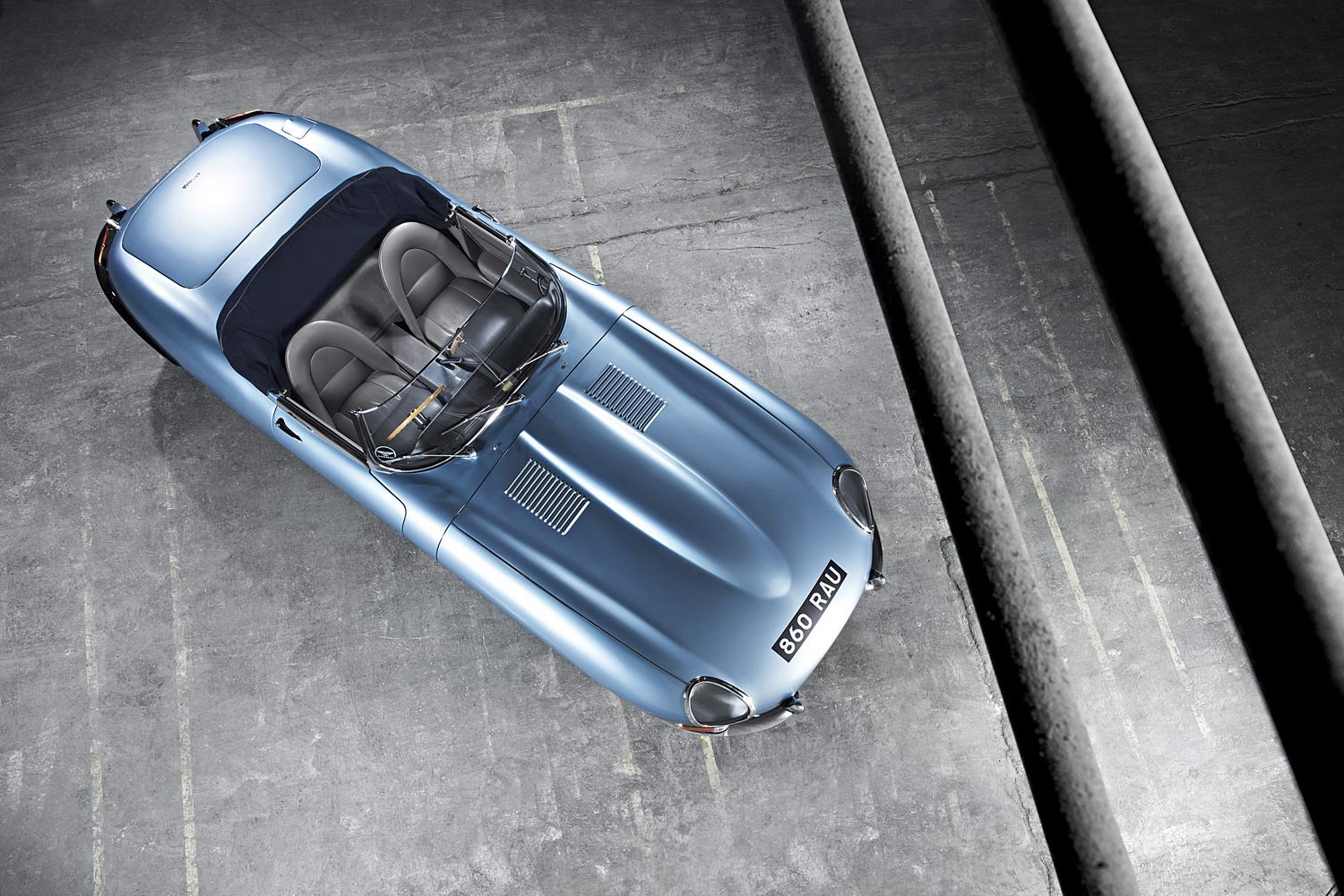The vast, curved shape of the bonnet rises, in truly priapic fashion, to the sky as the big throttle pedal descends to the carpet beneath. Sigmund Freud would doubtless have had a field day with the styling of the Jaguar E-Type, had he lived long enough to see it. Designer Malcolm Sayer swore blind that the shape was honed in the wind-tunnel, not the amygdala, but unquestionably it was the E's suggestive shape that kick-started the whole debate about fast cars being a substitute for their owners'... inadequacies.
The E-Type, in 2021, hits sixty, a venerable age for a car once considered revolutionary. For the first time in that sixty years, I am behind the wheel of one, powering down a sunny, hedge-lined lane in County Clare (don't worry - this all took place long before COVID shut us all down) and everything seems to come in threes. The three SU carburettors under that endless bonnet suck in air and hurl fuel in great sprays into the six-cylinder 4.2-litre XK engine. There were three windscreen wipers on the original Series 1 version (albeit just the two on this later Series 2 model) and everything seems to happen three times as fast as you think it will in a car designed before the space race had even properly started.
It has become a colossally important car, in spite of all its faults (which were manifest - weedy brakes, dreadful gearbox, terrible headlights, cramped cabin, and later on, rampant rust). Enzo Ferrari famously said, "La E-Type di Jaguar è l'auto più bella del mondo" - Jaguar's E-Type is the most beautiful car in the world. Beyond the looks, there's a solid argument that it democratised high performance, bringing speed into the realm of affordability, a process which would eventually evolve into the hot hatches and turbo saloons of the 1980s and 1990s.
Perhaps the speed should not be a surprise. That gorgeous 4.2-litre engine (from an age in which the aesthetics of an engine could still be appreciated) produced 265hp, and 384Nm of torque - respectable figures even today. When tested by The Autocar in 1965, the E-Type could hit a maximum speed of 246km/h and hit 100km/h from standstill in little more than 7.6 seconds.
Now, I have an excuse to exploit some of that power. Exiting a fast corner (of course, all corners feel fast in an E-Type...), the road ahead opens into a long, clear straight. It's empty save for a dawdling Nissan Micra about ten car lengths in front of me. I indicate out, prod the throttle to elicit a kick-down from the rare three-speed automatic gearbox (hardly in keeping with the E's image, but a better all-round option than the obstructive Moss four-speed manual) and accelerate hard. XK engine bellowing with glee at being unleashed, I flash past the Micra in a blur of blood-red curvature and then slot back into the correct lane. There's just one problem. The E-Type isn't slowing down. The throttle has jammed...
Problems with performance stretch right back to the dawn of the E-Type. Jaguar boasted at the car's launch in 1961 that it would hit 150mph, or 241km/h, making it one of the first production cars in the world to do so. Certainly, the most affordable car in the world to do so. At the time of the E-Type's launch, its Irish price would have stood at around IR£2,150 (about €55,000 in today's money). That seems expensive when you consider that a regular Mini 850 would have cost a mere IR£500 or so, but then to match the E-Type's performance you'd have had to lash out at least twice as much on a Ferrari or an Aston Martin.
Mind you, to match the E-Type's claimed (emphasis on the claimed) performance in 1961, you might have needed a little more than the basic purchase price. Motor magazine, later incorporated into one-time rival Autocar, took the first production E-Type - a gorgeously sleek coupe with the registration 9600 HP, which had been the original Geneva motor show car - to the Jabekke highway in Belgium, a lengthy stretch of dual carriageway which the Belgian authorities were happy to shut down for high-speed testing (ah, the good old days...). The E-Type duly hit its claimed 150mph maximum, but much later (decades later, in fact) Motor journalists recalled that when Jaguar delivered the car for the high-speed run, it was missing its bumpers, wore Dunlop racing tyres, and the 3.8-litre engine seemed much louder, and wouldn't idle at less than about 2,500rpm. Hmmm...
The later 4.2-litre engine, as fitted to 'my' Series 2 E-Type test car, would much more consistently provide genuine 150mph performance, but Jaguar was curiously reticent about letting some publications put that to the test. Brendan McCoy of the Irish Jaguar Club told us that: "The Irish Times wasn't allowed a test drive, but Cecil Vard of the Sunday Independent was, possibly because his brother had bought the first E in Ireland, registration LZC 241." Interestingly, according to McCoy, there wasn't the waiting list for E-Types in Ireland that was common in most other countries. Indeed, the second one sold in 1961 was apparently bought "by a young fellow who pretty much walked in off the street." That said, as with most sports cars, sales in Ireland were never that great - Jaguar sold a four E-Types in 1961, five the following year, and only one in 1963. By contrast, the E-Type's true successor, the current F-Type sports car (the intervening XJ-S and XK models were really beasts of a different sort altogether) has been wildly popular in Ireland - in 2018, we bought a whopping 21 of them, and even in the awfulness of last year, seven were registered.
The E-Type was a wonderful car when it came to building and burnishing Jaguar's image. Famously, and possibly apocryphally, Frank Sinatra walked into Jaguar's LA dealership and simply said "I want that car, right there. And I want it right now." Latterly, though, it did become something of an Albatross around Jaguar's corporate neck. The will-they-won't-they F-Type saga of the 1990s and early 2000s arguably distracted Jaguar from its core business of making compact and medium saloons that could truly compete with the likes of BMW and Audi, and while the brilliant F-Type that was finally launched in 2013 has certainly won plaudits and some significant sales, it's not the bread-and-butter earnings car that Jag needs.
Then again, neither was the E-Type by the end of its life. The later Series 3 models, made from 1971 to 1975 gained both a big V12 5.3-litre engine and a massive chrome grille, both apparently a sop to tastes in the US market, which had become Jaguar's biggest by then. The V12 would eventually become a marvellous engine, but when launched had barely any more power than the old 4.2 straight-six, and was far thirstier. Worse, the E-Type had grown and bulged outwards, spoiling the purity (however south of the waist you might consider them) of Sayer's lines. If the Series 3 has a saving grace, it's that it brought Jaguar back to the race track. Early successes in Sports Car Club of America races for Bob Tullius and his Group 44 team, using a V12 E-Type, would via something of a circuitous route, lead to those glorious Silk Cut-sponsored XJR racing cars dominating Le Mans in the late eighties, powered by a development of that same V12 engine.
None of which really mattered to me much when I realised that, with the Micra now a dot in the tiny, chromed rearview mirror, 'my' E-Type simply wasn't slowing down. The throttle was jammed wide open, and the 4.2 six had passed through the 'majestic howl' stage and straight into 'panicked scream.' Or that may have been me. The E-Type that I was driving was worth, then, a chunky five-figure sum. Today it would be worth well into six figures, and all of that value is now hammering down a two-lane road towards the Clare coast, with nothing holding it back. If I can't get this under control, the old flying boat base at Foynes was going to see its first crash landing into the sea in about seventy years...
Figuring that hammering the brake pedal would simply boil the fluid in an instant (E-Types never had very good brakes) I instead knocked the box into neutral and coasted down to an acceptable speed before pulling into a quiet side road. Finally flicking the tiny ignition switch to off (I'd kept it all switched on to maintain at least some braking ability), the manic bellow of the engine subsided, and in the shade of trees, I sat listening to various metallic surfaces ping and pop their way back into shape as they cooled. The E always had a reputation as a motoring bad boy. The night of its Geneva motor show reveal, so clamorous was the public reception that Jaguar's in-house racing driver, Norman Dewis, was deputised to drive from Coventry to Switzerland, overnight, with an extra car. He made it for opening hours the next morning, having driven - at breakneck speed, through snow and ice - all the way. Even when not having its mechanical neck wrung, the E enjoyed celebrity ownership status - George Best, Peter Sellers, Tony Curtis, and Steve McQueen all owned E-Types, so one was never far from bad behaviour.
Or, in my case, simple bad luck. The E-Type's owner soon arrived on the scene, and diagnosed the fault - the gearbox's kickdown mechanism had fouled the throttle cable, jamming it in place. A quick fumble under the bonnet and all was right again, and the E and I were able to carry on. I'd gotten away lightly, certainly better than the unfortunate (presumably fictional) star of Jan & Dean's 1954 song 'Dead Man's Curve' in which and E-Type (called the XK-E in the US market) crashes on a mountain road while racing a Chevrolet Corvette.
Unlike the doomed musical driver, I took it gently now, but it was enough to get a feel for the car. The usual caveats about old cars apply - heavy steering, wooden brakes, that sense of anguish when you hit a sharp bump that you might have broken something significant - but also much for modern car makers to learn. Such as how to create a cockpit that's both inviting and dramatic. Or how to transmit such wonderful steering feel up through the slim, wooden rim of the wheel. Or how to make an engine sound that good (when it's not jammed into wide-open acceleration of course).
Perhaps though the E-Type, it of the triple carburettors and triple wipers, might be able to create for itself a third life.
Quite apart from the many operations who can now offer E-Types restored and upgraded to make them capable of everyday driving in modern conditions, Jaguar itself has actually started making them again. There was a short run of built-from-scratch 'Lightweight' E-Type racing cars, then and since then Jaguar has started making 'Reborn' E-Types - not merely restored, but rebuilt and recreated, using original parts but modern techniques and quality control. They are, in a word, astonishing creations.
Beyond that, 60 years on, the E-Type has one trump card left to play - electricity. The electric E-Type, or E-Type Zero to give it its proper name, has already made a name for itself, thanks to a cameo role in the most recent royal wedding. Harry and Meghan drove away from their wedding ceremony at Windsor Castle in Jaguar's prototype E-Type Zero.
"We've been overwhelmed by the positive reaction to the Jaguar E-type Zero concept," said Tim Haning, director of Jaguar Land Rover Classic, the restoration and recreation arm of JLR, which will build the cars. "Future-proofing the enjoyment of classic car ownership is a major stepping stone for Jaguar Classic. E-type Zero showcases the incredible heritage of the E-type, and the expertise and craftsmanship at Classic Works, while demonstrating Jaguar Land Rover's dedication to creating zero emission vehicles across every part of the business, including Jaguar Classic."
For this particular E-Type, though, Jaguar left out something crucial. Namely the 4.2-litre engine. Instead, the E-Type Zero uses a 40kWh battery stack, driving a 220kW electric motor. Thanks to the binning of the engine, gearbox, and cooling system the Zero is actually some 46kg lighter than an original E, which means it could, theoretically, have sprinted from 0-100km/h in 5.5 seconds, which is faster than an original car by at least 1.0 seconds.
Jaguar says that it's working towards a useable range of around 250-280km on a single charge and that the Zero's 40kWh battery should fully charge in around 6-7 hours from a domestic socket.
Apparently, the lithium-ion battery pack is the same weight as an XK straight-six engine and sits in the same position, so the E's handling and ride should be more or less the same as that of an original. And if at any stage you decide you want the noise and sound of that original, the petrol engine can be re-installed. From the outside, the Zero is indistinguishable from an original car, although the interior is much-altered - the shapes (and gorgeous wood-rimmed steering wheel) are the same, but there's now a carbon-fibre dash, digital instruments, infotainment screen, and a circular gear selector. Presumably, owners will be able to specify a more traditional cabin if they please.
The price? Well, it might help to have a palace or two tucked away in your portfolio of assets. Something in the region of €400,000 was spoken of when the prototype was unveiled, so better hope your prince/princess turns up with a well-stuffed cheque book. The E-Type always had an electrifying presence. On its diamond jubilee, that has now become quite literal.

